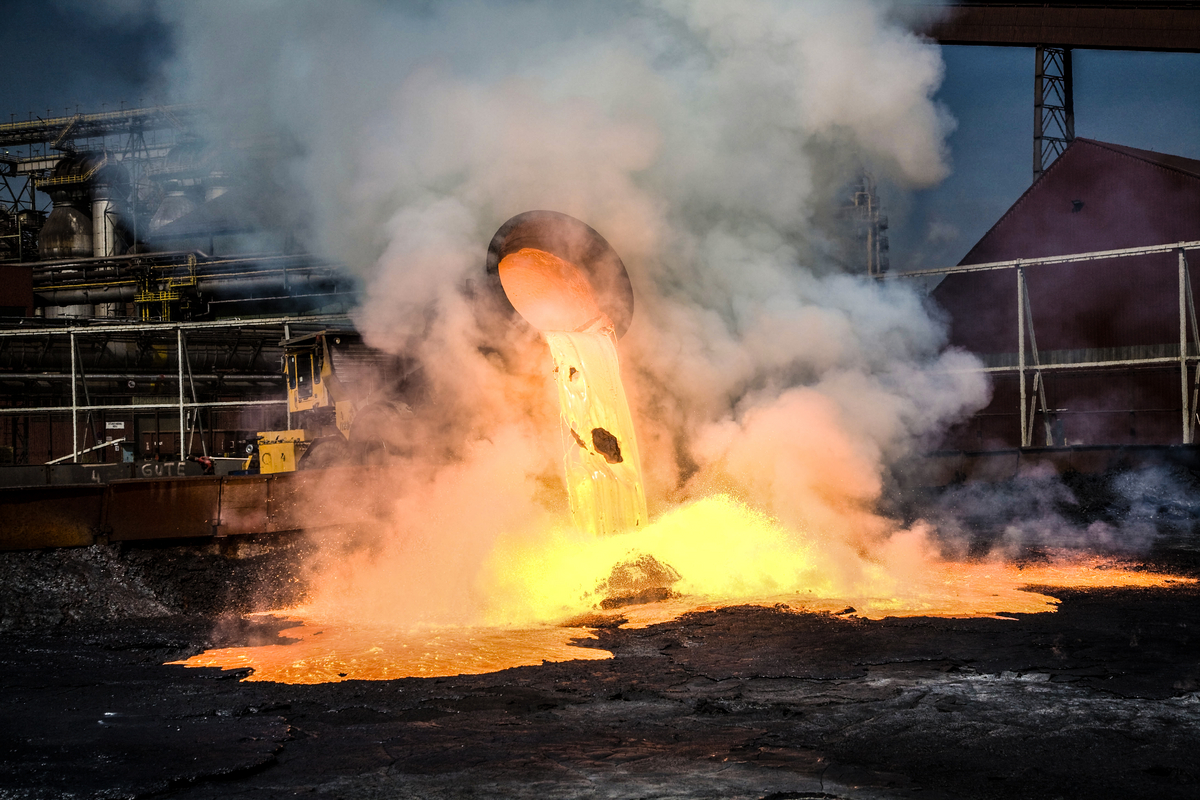Introduction
The project focuses on the development of an innovative treatment of steelmaking slags to increase their valorisation by enhanced recovery of valuable fractions being important secondary resources for the steel and non-steel sectors. By separating undesired nonferrous metals from the ferrous fraction, the iron-rich material can be recycled as secondary resource in the steelmaking process. In addition, the processing of steelmaking slags will be studied to produce mineral fractions that might be used as secondary resources for industries other than the steel industry.
The project will examine various primary steelmaking slags, including basic oxygen furnace (BOF) and possibly electric arc furnace (EAF) slag. Leaching of BOF slag will be applied using organic or inorganic acids and deep eutectic solvents to conceivably increase metal solubility.
Another primary slag being in the focus of the project will originate from a future smelting facility downstream the direct reduction process, which is an electric smelting furnace (Smelter). The generated slag will be evaluated regarding its latent hydraulic properties to determine its suitability as a secondary raw material, e.g., for cement industry.
The valorisation of steelmaking slags is furthermore affected by the element phosphorous. Phosphorous is defined as a critical raw material with a limited global availability in a useable form and its recovery from slags has a considerable economic importance. Rare knowledge is available about the degree of phosphorous recovery as well as about the quality of the recovered phosphorous. The pyrometallurgical InduRed process (inductively heated coke bed reactor) will be used for slag reduction trials and phosphorous recovery.
Objectives and Motivation
- Testing of different leaching approaches for cooled BOF slag, including the use of organic or inorganic acids followed by mineral processing methods (grinding, magnetic separation) and the use of deep eutectic solvents to possibly increase metal solubility or separation efficiency
- Development of a mass and energy balancing tool including parameter studies to evaluate the granulation of Smelter slag and the evaluation of the treatment efforts for steelmaking residues as potential feed materials for a Smelter aggregate
- Determination of (latent) hydraulic properties of Smelter slag
- Quantify the quality of recovered phosphorous from the pyrometallurgical InduRed process
Methodology
- Screening of potentially useable organic acids, such as citric acid, with varying process parameters (temperature, pressure, leaching duration, acid quantity, and solid / liquid ratio) and up-scaling of a suitable BOF slag leaching system to 3-5 litres
- Mineralogical analysis of the slag matrix before and after leaching using scanning electron microscopy
- Pre-treatment of ground BOF slag using deep eutectic solvents (quaternary amine compounds) and quantify other potentially useable inorganic solvents, such as specific salts (e.g., potassium- or sodium-containing materials)
- Develop an offline MS Excel based model to simulate the post-processing of the Smelter slag and evaluate the pre-treatment process of steelmaking residues, such as mill scale, or sludges to be used as possible feed materials for the Smelter
- Cement prism tests to quantify the (latent) hydraulic properties of the Smelter slag
- Treatment of ground steelmaking slag samples in the InduRed plant with varying process conditions (temperature, O2 partial pressure, slag basicity, quantity of reducing agent) and analyze the off-gas to quantify the generated phosphorous components and the phosphorous gasification rate in dependence on the chosen operating conditions
- Derive fundamental thermodynamic data for the formation of phosphorous components during the reducing slag treatment
Results and Application
Within the scope of the project, suitable leaching agents and optimized leaching process parameters for cooled and ground BOF slag are established based on the results of the conducted leaching tests. In a further step, the mineral phase structure of BOF slag before and after the leaching sequence as well as after magnetic separation should be derived. Quantifying the degree of iron removal from the remaining mineral slag matrix is additional anticipated outcome.
A model tool for slag granulation with mass and energy balances is expected to be used for studying Smelter slag treatment use cases. Furthermore, the efforts for pre-processing of fine-grained and sludgy steelmaking residues serving as potential feed materials for the Smelter should be quantified.
By quantifying the latent hydraulic properties of granulated Smelter slag, possible application fields as secondary resource for non-steel sectors should be defined.
The degree of phosphorous removal from steel mill slags as a function of InduRed process conditions will be determined and a set of thermodynamic data for phosphorous components will be made available.
Finally, the expected quality of the recovered phosphorous product after the gas scrubbing step of the InduRed process (e.g., phosphorous recovered as phosphorous acid, calcium phosphate) should be evaluated.

 DE
DE EN
EN![[Translate to English:]](/fileadmin/_processed_/4/0/csm_recycle49_weiss_b776401e10.png)
